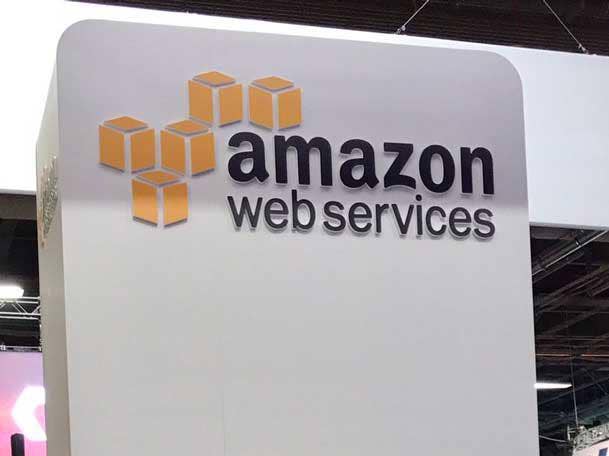Oracle Q2 Earnings Preview: 5 Big Things To Watch
Oracle will report its earnings for the second quarter of its 2023 fiscal year – a period covering the three months that ended Nov. 30 – after the market closes Monday.

A deeper embrace of multi-cloud, competition with Amazon Web Services and Snowflake and more investments in health care offerings are some of the things investors will look for when database and cloud products vendor Oracle reports earnings Monday.
Austin, Texas-based Oracle will report its earnings for the second quarter of its 2023 fiscal year – a period covering the three months that ended Nov. 30 – after the market closes on Dec. 12.
[RELATED: Oracle CloudWorld 2022: Ellison Says An ‘Internet Of Clouds’ Is Imperative]
What To Expect From Oracle’s Q2 2022 Earnings
Oracle’s earnings will come after some good news for the company and several of its rivals. On Wednesday, the United States Department of Defense named Oracle, Google, AWS and Microsoft as each receiving hybrid contracts worth at least $100,000 with a shared ceiling of $9 billion.
A report Thursday from investment firm Wedbush said that Google and Oracle “in particular come out of this process shining like a bright star” due to most analysts viewing the cloud market as dominated by AWS and Microsoft.
Here’s what else you need to know.

Multi-Cloud Embrace
Oracle co-founder and Chief Technology Officer Larry Ellison has spoken publicly lately about the importance of Oracle partnering with more independent software vendors (ISVs), including a key collaboration with Microsoft announced over the summer.
During Ellison’s keynote at Oracle CloudWorld 2022, he advocated for an “internet of clouds” where all of the major clouds are connected to give customers more choices.
“There should be an internet of clouds,” Ellison said in October. “The clouds should be interconnected. And you can mix and match services from multiple clouds. Customers choosing the service that best meets their needs. The garden walls come tumbling down.”
We’ll be listening for more examples of Oracle embracing a multi-cloud world and working more closely with other vendors for the sake of consumers. These investments from Oracle could help partners with practices for multiple cloud vendors.

Any ‘Shock’ AWS Customer Wins?
Don’t mistake Oracle’s acceptance of multi-cloud demand for a kinder, gentler vendor.
There is no doubt Ellison will have some of his trademark digs for cloud rival Amazon Web Services, database products rival Snowflake or enterprise applications rival SAP – or even all three of them.
AWS recently wrapped its annual re:Invent conference, announcing new services and giving Ellison some new material to riff on.
A report from investment bank KeyBanc Capital Markets earlier this month said that re:Invent announcements for Amazon’s Redshift data warehouse offering aim to compete with Oracle and fellow lakehouse vendors such as Snowflake and Databricks.
During the previous quarterly earnings report in September, Ellison focused on the performance differences of Oracle’s MySQL HeatWave compared to Redshift, Amazon Aurora and Snowflake.
He also said that Oracle is “talking to the most famous brands that are running Amazon and some of them are going to be moving very soon.”
“The AWS bill is getting very large,” Ellison said on the call. “And they (AWS customers) can save a huge amount of money by moving to OCI (Oracle Cloud Infrastructure). And we expect next quarter we’ll be announcing some brands and companies moving off of Amazon to OCI that will shock you.”
Any signs that Oracle can hold its own against the cloud giants and younger competitors like Snowflake should be helpful for Oracle partners.

Less Cloud Exposure?
One could argue that Oracle’s lower ranking for cloud market share could mean they are less exposed to volatility in the space.
In October, AWS and Microsoft reported softness in their fast-growing cloud segments as enterprises tighten their belts with high inflation in the U.S. and concerns of an upcoming recession.
“The business is growing in absolute dollars at a really good clip,” Brian Olsavsky, senior vice president and chief financial officer for AWS parent company Amazon.com, said on the company’s latest quarterly earnings call. “We do see some of the consumers are cutting their budgets and trying to save money in the short run.”
He continued: “I think everyone‘s just cautious and they want to, again, watch their spend. And as CFO, I appreciate that. And we’re doing the same thing here at Amazon.”
On Microsoft’s call, CFO Amy Hood said that Microsoft sales, customer success teams and partners are working to optimize customer Azure and cloud workloads as Azure growth continues to decelerate.
On workload optimization, “we saw that across all segments,” Hood said. “If there was one segment where I may have seen it a bit more, I would say, in the small or midsize segment of the market. That tends to be more through partner[s]. We rely on partners to help customers do those same optimizations and prepare workloads.”
She continued: “If you step back and say, ‘This is how you drive ultimate share gains and build customer loyalty and help customers grow’ – I think that needs to be the focus of our teams inside the company and also the partners that we rely on to help customers do that as well.”
Salesforce, too, reported an increase in the time it takes to close deals, blaming the economy.
“We’re not assuming that this economy gets any better anytime soon,” Salesforce co-founder and co-CEO Marc Benioff said on the company’s latest earnings call. “We’re just reporting what we see with our customers, the kinds of changes they make when they start to feel these headwinds. We are following our playbook to make sure we’re well positioned to gain market share, to increase our profitability, to focus on our operating margin, to focus on the growth of our revenue, and be able to continue to invest—especially when the economy recovers.”

Health Care Push
Ellison has defended Oracle’s $28 billion acquisition of electronic health care systems vendor Cerner – completed in June – as giving the database and cloud services vendor a leg up in health care and opening new opportunities in the space.
During Oracle’s annual CloudWorld conference, Ellison pitched the concept of a national health records database to help with data security and speed up health care delivery in the U.S.
“The current generation of health care systems put the providers, big hospitals, at the center of the system. Not patients. And that’s a fundamental problem,” Ellison said during his keynote. “What we’re intending to do is we’re going to keep providing hospitals with clinical systems. … But we’re also going to build additional systems. In addition to the provider health-care management system, we’re going to layer on top of that a national, public health electronic record database.”
He continued: “In other words, you’re going to have the providers’ databases, thousands of them in the United States. But there’s going to be one national U.S. public health system and one national U.S. electronic health record database. So there’ll be one place you can go to find all of your health records.”
Cerner may not be it for marquee Oracle acquisitions. In a November report, investment firm Wedbush said that Oracle – along with fellow software stalwarts Salesforce, Microsoft, SAP and IBM – “will likely get a lot more aggressive on the M&A front” due to softer growth in a down economy.

JWCC Victory Lap
Oracle is the first among the four cloud hyperscalers to report earnings following the award of the Department of Defense’s $9 billion cloud computing contract vehicle known as the Joint Warfighter Cloud Capability (JWCC) deal.
No financial windfalls have come yet from the JWCC – the multi-cloud successor of the Joint Enterprise Defense Infrastructure (JEDI) project, which Microsoft originally won before the project became bogged down in politics and legal woes.
The vendors will have to compete for individual task orders within the JWCC, but each vendor is guaranteed $100,000 from the JWCC. The work should be finished by June 2028.
A report Thursday from investment firm Wedbush said that Oracle, along with Google, “in particular come out of this process shining like a bright star” due to most analysts viewing the cloud market as dominated by AWS and Microsoft.
“Both vendors did well in cloud bake offs and have significantly raised their cloud and growth profile over the past few years inside and outside of the Beltway,” according to the report.
The report continued: “In our opinion, this is the most important cloud deal to ever come out of the Beltway is only the tip of the iceberg with roughly $20 billion to $30 billion of more potential cloud government contracts up for bid over the next 5 to 7 years.”
JWCC “will be the backbone for the Pentagon‘s modern war operations and further operations thus providing a huge vote of confidence for the scalability and security around all 4 vendors’ cloud platforms,” according to the report.